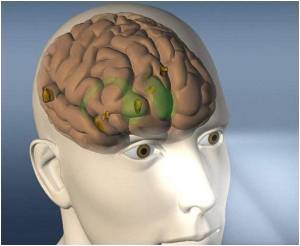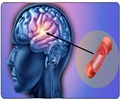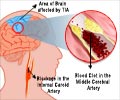Metrics that healthcare professionals can use to monitor the diagnosis and treatment of patients at stroke centers to help improve the quality of care stroke patients receive have been proposed

The metrics are being proposed to assist in the standardized designation of Comprehensive Stroke Centers. These centers would be expected to monitor new diagnostic and treatment metrics, in addition to the standard metrics now required for Primary Stroke Centers designated by The Joint Commission. Comprehensive Stroke Centers would provide a highly specialized and advanced level care, including neurosurgery and interventional neuroradiologic procedures for patients with ischemic strokes (caused from blocked blood vessels) and hemorrhagic strokes (caused from bleeding in or around the brain).
The new recommendations are based on experience with previous quality improvement initiatives, such as the American Heart Association/American Stroke Association's Get With The Guidelines® program. Numerous studies have now documented that such initiatives improve patient care and outcomes when metrics are used to monitor the quality of care, said Dana Leifer, M.D., statement lead author and associate professor of neurology at Weill Cornell Medical College in New York. He said improving how quickly patients with ischemic and hemorrhagic strokes are diagnosed and treated is a cornerstone of the recommendations. Some of the standards include:
- Specifically tracking the percentage of ischemic stroke patients identified as eligible for tissue plasminogen activator (tPA) and appropriately treated within a 60 minute door-to-needle time (the time between a patient presenting at the hospital and being treated with tPA). tPA is the only clot-busting drug approved for treating ischemic strokes and is effective only when given within a few hours after onset of a stroke.
- Tracking the time from hospitalization to treatment to repair blood vessels for patients with a ruptured aneurysm; and
- Performing 90-day follow-up of ischemic stroke patients to assess their outcome after acute interventions, including treatment with tPA.
"Some of the metrics have stronger evidence supporting them or have greater clinical significance, and we designated these as core measures that Comprehensive Stroke Centers should all monitor," said Leifer. "Initially, Comprehensive Stroke Centers may have the option to track only some of the other metrics, just as Primary Stroke Centers were only required to track a few measures at first. But by using our metrics as part of quality improvement efforts, over time hospitals should be able to improve the quality of the care that they give and improve patient outcomes."
Leifer and colleagues devised the measures after extensively reviewing published papers on the most effective treatments and outcomes among severe stroke patients. Their efforts date to 2005, when the American Heart Association/American Stroke Association, as part of a collaborative effort called the Brain Attack Coalition, recommended establishing comprehensive stroke centers. Five years earlier, the coalition issued recommendations for Primary Stroke Centers – more than 800 are now certified nationwide.
Ralph L. Sacco, M.D., president of the American Heart Association and chief of neurology at the University of Miami's Miller School of Medicine and Jackson Memorial Hospital, said while some hospitals are self-proclaimed comprehensive stroke centers, no standard certification program, like that for Primary Stroke Centers, is yet in place. Such a program that consistently holds providers to these new measures could help reduce stroke death and disability.
Advertisement
"The American Heart Association's 2020 goal is to improve the cardiovascular health of all Americans by 20 percent, as well as to continue to reduce deaths by cardiac diseases and stroke by 20 percent," Sacco said. "Initiatives such as primary and now comprehensive stroke center certification will greatly help us reach our 2020 goal."
Advertisement
Source-Eurekalert














